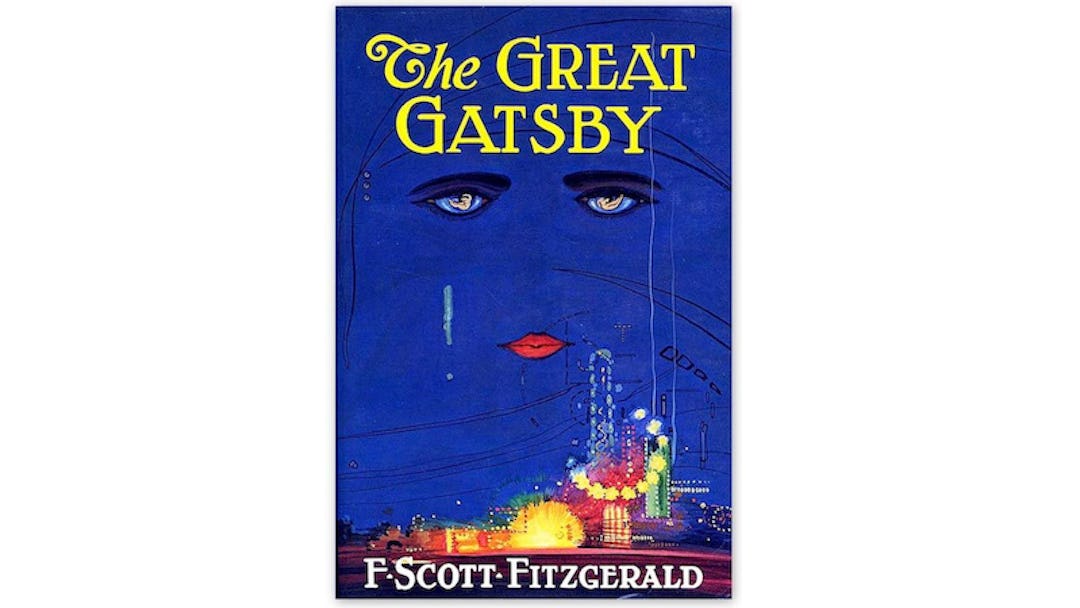F. Scott Fitzgerald’s The Great Gatsby stands out as the finest of his four completed novels because it’s an empathetic satire that delivers the author’s most aggressive attack on New York’s high society. I’ve read it maybe five times, although I prefer the first half because I think that’s where the magic happens. It’s when all three of the novel’s parties take place, and where Fitzgerald’s psychological complexity thrives most — the simultaneous worship and disdain for wealth and celebrity that characterizes his body of work. It’s often praised as a top contender for the Great American Novel, but Gatsby also remains as the best New York novel I’ve ever read because it so fully embodies the city in the time during which it was written, while continuing to speak to readers (and especially New Yorkers) of every generation.
Which is kind of a remarkable thing to say, considering that The Great Gatsby only sold 24,000 copies during Fitzgerald’s lifetime and was dismissed by H. L. Mencken as “no more than a glorified anecdote.” It was only after Fitzgerald’s death that the US military printed and sold 150,000 copies to service members, which arguably brought the novel back into relevance. Today, in advance of the Baz Luhrmann adaptation, it’s the highest selling paperback on Amazon.
It makes sense that an era-defining novel can only be celebrated as such in retrospect, after we’ve had a few decades to gain perspective on the time it describes. This may help to explain Gatsby‘s delayed ascent to the canon. But some of the best New York novels in American literature — say The Catcher in The Rye, or Another Country — were all daringly written about their contemporary times. You can find great New York novels of the past on any high-school English syllabus, but what about their modern-day equivalents? Who’s writing today’s equivalent of The Great Gatsby?
Let’s throw out a few candidates. The Emperor’s Children? The Privileges? American Psycho? Stunning as these novels are, none comes close to drawing the widespread love and critical reverence of a Salinger or Fitzgerald classic. Perhaps the most recent novel to came anywhere near a “generation-defining” consensus is Jay McInerney’s Bright Lights, Big City, but it’s been 30 years since that book came out.
Virtually no one’s agreed on a successful New York novel in the years since 2001, when 9/11 came along and made writing about the contemporary city controversial in itself. Extremely Loud and Incredibly Close? Too immature. Netherland? Too conservative. Open City? Not Sebaldian enough! When Rachel Kushner’s second novel The Flamethrowers released last month, Flavorwire and others greeted it with a chorus of praise. Yet its popularity owes largely to its depiction of a romantic, bygone era of 1970s New York, similar to that of Patti Smith’s bestselling memoir Just Kids. Both books offer a romantic, nostalgic past while the current world stays confusing, uncertain, and superficial. They see New York through an Instagram filter. Critics have always favored the grand and historical over the contemporary and superficial, yet the current obsession with the past in American culture (Mad Men, chillwave) has brought us to a point at which readers are more partial than ever to nostalgia, which crowds out any kind of hope for a “generation-defining” New York writer.
But let’s go back to Teju Cole’s Open City for a moment. As far as I’m concerned, it’s the single most culturally relevant New York novel in years. Published in 2011, Open City might as well have been written as the exact opposite of The Great Gatsby. In the latter, the tragic plot is propelled by sequential events that inevitably lead to Gatsby’s death and Nick’s epiphany of New York. In Open City, there is no epiphany. In fact, there’s barely a plot. Told primarily through an erudite Nigerian immigrant’s walks through New York City, the novel lyrically illustrates the meandering, aimless irreverence of a multicultural New York after 9/11. It favors anecdote over narrative, observation over backstory. If Gatsby is both a celebration of and an attack on the glamor of extreme wealth, Open City is a meditative celebration of New York’s multiculturalism that also breaks open, through a guttural twist in the book’s final pages, the hypocrisy and selective amnesia of American foreign policy.
While the book got very good reviews, it’s worth noting the similarities between Mencken’s critique of Gatsby and Michiko Kakutani’s review in the Times of Open City, in which she called it a “failure” to be “emblematic of some larger historical experience.” Both critics wrote that The Great Gatsby and Open City failed to place themselves in literary history.
We can likely expect Open City to age well (although it’s difficult to imagine it’ll be made into a 3D movie). As far as what New York’s most important living writers think, it’s already aging well. Thousands of aspiring writers moving to the city each year, and at least one will turn out to be “a” voice of “a” generation — even at a time when the relevance of the novel as a form has come into question. In Fitzgerald’s essay “My Generation,” he defines a generation as reactionary by nature: “a set of ideas, inherited in moderated form from the madmen and the outlaws of the generation before.” But while that’s happening, New York still changes. The rich are getting richer, the poor are getting pushed ever farther from the L train, the revolution is dead, and the kids stopped buying houses. Somebody go write a novel about that.
With Baz Luhrmann’s splashy adaptation of F. Scott Fitzgerald’s Great American Novel contender hitting theaters Friday, Flavorwire is devoting this week to all things Great Gatsby. Click here to follow our coverage.
